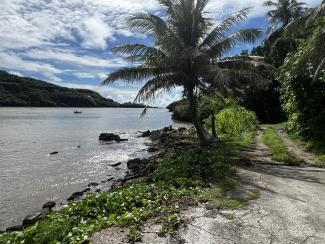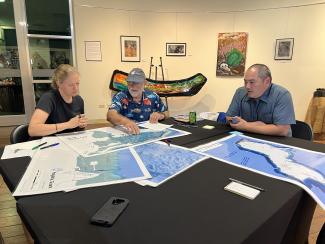Dotting the vast Pacific Ocean, the U.S. Pacific Island territories – Guam, American Samoa, and the Commonwealth of the Northern Mariana Islands (CNMI) – possess a unique blend of Indigenous cultures, maritime histories, and diverse marine ecosystems. They may also contain an abundance of offshore critical mineral resources, which are essential to U.S. economic and national security.
As the federal agency responsible for managing mineral resources on the U.S. Outer Continental Shelf (OCS), the Bureau of Ocean Energy Management (BOEM) is coordinating efforts to identify potential supplies of these valuable critical minerals. Working with researchers from East Carolina University, BOEM is funding a four-year study to explore the maritime heritage of the U.S. Pacific Islands and identify archaeological and cultural resources that could be affected by offshore leasing activities – before any projects are proposed.
Hidden History
The U.S. Pacific Island territories have an extensive maritime history, dating back thousands of years. The islands and surrounding waters also saw substantial military activity during World War II. Consequently, potentially hundreds of cultural heritage sites (and unexploded ordinance sites) could lie beneath the waters surrounding the islands.
BOEM’s Maritime Heritage of the U.S. Pacific Islands study aims to compile archival data on submerged archaeological resources, identify traditional cultural properties that could be impacted by offshore development, and work with local indigenous communities to identify best practices for incorporating traditional knowledge into National Historical Preservation Act and National Environmental Policy Act reviews.
Engaging Communities: Mapping Culturally Significant Areas
In July 2025, BOEM and researchers from East Carolina University kicked off a series of community workshops on Guam and CNMI. Designed with extensive community input, the workshops aimed to identify areas of cultural significance connected to the local Pacific Island cultures in Guam and the CNMI.
Participants were divided into focus groups to discuss numerous topics, including shipwrecks, canoe landings, traditional fishing and gathering areas, safe navigation routes and currents. Researchers ensured that sacred or sensitive information remained within the community and that federal agencies will only receive general heritage area information.
BOEM and researchers will combine the knowledge gleaned from the workshop with existing databases to create a more comprehensive understanding of the area. BOEM plans to hold additional workshops throughout the study period, including throughout American Samoa beginning in September 2025.
-- BOEM --
The Department of the Interior’s Bureau of Ocean Energy Management (BOEM) manages development of U.S. Outer Continental Shelf (OCS) energy, mineral, and geological resources in an environmentally and economically responsible way.



